What Are The Best Xbox 360 Games Ever?
With a ton of terrific titles to choose from, it's been tough picking the games we believe represent the best that the Xbox 360 has to offer. Oh, and don't expect all of them to be critically-acclaimed best-sellers. These picks are personal!
This article first appeared on USgamer, a partner publication of VG247. Some content, such as this article, has been migrated to VG247 for posterity after USgamer's closure - but it has not been edited or further vetted by the VG247 team.
Mirroring our article in which we listed the games that we believe represent the very best the PlayStation 3 has to offer, this feature does the same for Xbox 360.
Rather than being a somewhat predictable roster of massive best-sellers, the games on this list are personal picks from the USgamer team - games chosen not for their popularity or success, but simply because we believe they deliver the most enjoyable gaming of this generation. Yes, a few smash hits have snuck in, but these are games we believe are true classics: the best of the best. So while it might be shocking that games like GTA V, Bioshock Infinite and Mass Effect 3 are missing, that doesn’t mean we don’t like them. Far from it – they’re absolutely great, as are many other Xbox 360 games. It’s just that when it comes down to it, we simply like playing these games more.
Think our choices suck? Can't believe we didn't include your favorites? That's what the comments section is all about. We'd love to hear what you think and which games you believe represent the best that the Xbox 360 has to offer.
Jaz Rignall, Editorial Director
Shadow Complex
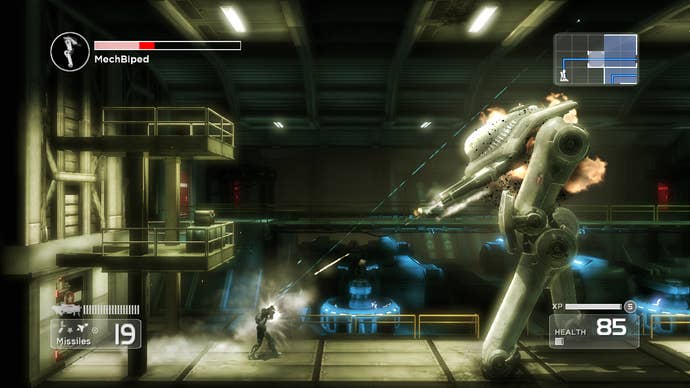
Shadow Complex blew me away when I first played it, and I still think it holds up as one of the greatest downloadable games of this generation.
It’s a platform game whose gaming DNA contains elements of old-school shooters like Contra and Metal Slug, as well as the kind of exploring and discovery normally associated with the Metroidvania category. But while its roots are steeped in history, Shadow Complex’s presentation, production values and modern-day trappings evolve the genre into something completely contemporary.
This is apparent from the moment you start playing. Even though it’s fundamentally based on a platform construct that’s essentially 2D, the gameplay transcends its dimensional limitations with some clever design elements. The camera zooms in for moments of close combat, and you often encounter enemies that are shooting at you from cover in the background – and you can return fire by aiming your gun into the screen. Both these mechanics combined with the more traditional platforming helps everything feel more dynamic and varied than any platform game of yore.
But while the action provides the initial draw, it’s the exploration that keeps you coming back. In classic Metroid style, when you start the game, you can immediately see that there’s a vast environment to explore – but to access different parts of it, you need to find the right items. As you work your way through the game, your character also levels up, making him stronger and more adept, so that challenges that seemed impossible to handle only a while ago become just speed bumps when you go back and try them again. This makes progress feel very satisfying and rewarding, and combines perfectly with the intense, exciting action to create a truly memorable game.
What impresses me the most is how Shadow Complex combines the feeling of classic platform games from the '90s, but brings the genre bang up to date with new challenges and features that show how it’s possible to teach an old dog some really neat new tricks. It has a terrific atmosphere, compelling plot, some excellent set-piece boss battles, and tons of secret stuff to discover. Needless to say, if you grew up on platformers and missed this the first time around, this is a must.
Joe Danger: Special Edition

Just like Shadow Complex, Joe Danger takes classic gaming and updates it into something fresh, new and awesome. This time around, it’s elements of NES Excitebike, Game Boy Motocross Maniacs, and (for the gaming trainspotters amongst you) even a touch of Commodore 64 KikStart. Yep, it’s a side-scrolling motocross game – but one that has been lovingly crafted into something that’s really special.
One of the standout features of this game is its difficulty curve. It’s a masterclass in beautifully weighted design. Things start out simply enough, but as you play, you’re given new challenges that test your mettle, but don’t ever make you feel like you’re hitting any kind of wall. You just keep on going and going… until you pull off an insanely complex series of combos and suddenly realize just how good you’ve gotten at the game. It’s like one of those gadgets that claims it makes you fit with no effort at all. Joe Danger is the gaming equivalent of that – and it works!
Which is a good thing, because you certainly need to become adept at the game to complete some of Joe Danger’s more devious tasks. Initially, it seems like the game is just a straightforward racer, but it’s not just about racing or time trials; there are a huge variety of challenges that’ll tax – and indeed help develop – your skills. Whether it’s performing specific stunts, grabbing stars or hitting targets, there’s a ton of things to do in this game.
It’s this variety, and indeed the fact that Joe Danger is the kind of game you can just keep replaying over and over to improve your score and unlock more stuff that makes it so addictive. And to cap it all off, you can even make your own levels.
To be honest, I dismissed Joe Danger when it first came out. It just didn’t look that great to me. But I ran into it a few months later at a friend’s house and ended up giving it a go. Following several hours of uproarious gaming, I came home, booted up my 360 and downloaded it immediately.
Forza Motorsport 4
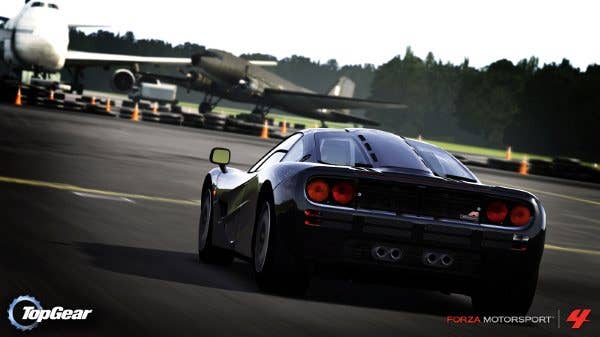
This is a no-brainer for me. The reason why I bought my original Xbox is because I wanted to play Forza. And the reason why I bought my Xbox 360 is because I wanted to play Forza 2. Yes, I’m a racing nut, and I bought Forza 3 and 4 as well.
What makes the latest Forza significant for me is that it’s the first time I’ve rated the franchise higher than its competitor, Gran Turismo. I’ve been in love with Polyphony’s series ever since I bought it on import at the end of 1997. It made a huge impression on me, and playing through it over the following weeks is one of my gaming high points. However, over subsequent editions, the series has increasingly felt like it’s resting on its laurels – and that more time was being spent on cosmetic enhancements, rather than adding new features and making the racing more exciting and interesting.
Meanwhile, the opposite is true of the Forza series. Each new edition has evolved the game – maybe sometimes a little too slowly – but have nevertheless ensured the series has kept moving in the right direction. And in true tortoise and hare fashion, these improvements have slowly, but surely enabled Forza to reel in the huge lead carved out by Gran Turismo and simply become the better game.
Forza 4 delivers on almost all counts. The graphics are top-notch. The racing is brilliant. The community features are superb. And all the usual features feel polished to a tee. The only thing I didn’t like that much is the Autovista mode, which felt like it had been put into the game to try to sell racing fans on Kinect, rather than being a genuinely compelling addition to the series.
But despite that, Forza 4 represents the pinnacle of this generation’s racing. I can’t wait to see how the pair continue to duel it out over the next, but for now, it doesn’t get any better than this.
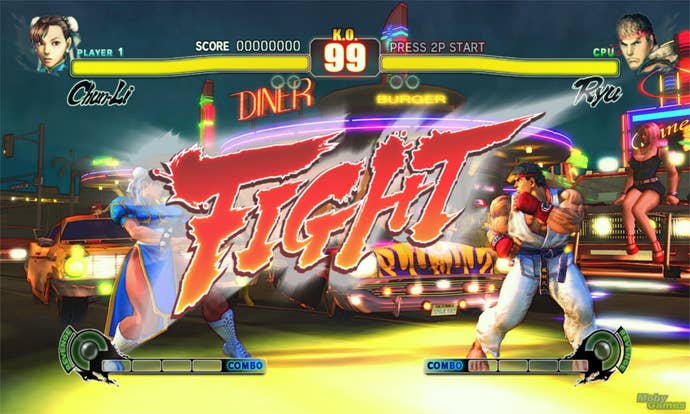
Street Fighter IV
Street Fighter and I go way back. Way, way back to when the very first coin-op almost broke my knuckles thanks to its ridiculous pneumatic punch buttons. Yep – the original Street Fighter had buttons you physically hit, and depending on how hard you punched, it would select a particular move for you. Not a great idea…
But anyway. Street Fighter IV is a brilliant blend of old and new, making for what I believe is the best fighting game to grace the Xbox 360. Its fighting style steers away from linking combos, instead focusing on a system more like boxing. This makes for a slightly different experience than prior SF games, and one where you can more easily read your opponent’s moves and counter them. At least, that’s what I felt as an average player. Your miles may vary, of course, but I loved the way SFIV handles combos, and the whole thing just feels a little more open for tactical improvisation.
This time around, focus attacks allow for a two-phase system of moves in which a player absorbs an attack, then uses that energy to counterattack. In some cases, the counterattack cannot be blocked, making for a proper thrashing. Then there's the ultra combos, similar to the super combos in that they involve long, cinematic moves, but different in that the ultra combo gauge, or revenge gauge, fills up when taking damage, not when inflicting it.
What all this delivers is a flexible and dynamic fighting system that’s fun for novices, and was more than good enough to entice Street Fighter pros back to the franchise. That’s a ringing endorsement for sure, and the reason why I believe Street Fighter IV is the undisputed fighting champ of this generation.
Brendan Sinclair, Contributing Editor
Geometry Wars: Retro Evolved

I loved Geometry Wars. It was so simple in concept, just another top-down twin-stick shooter of the Robotron: 2084 lineage, but it had such depth and style I could play it almost endlessly. I played it so much I started to think of the game in fundamentally different ways. At first, I was piloting a ship through clouds of enemies relentlessly chasing me around an enclosed playfield. But then I realized every enemy in the game (except for the first, most harmless one) moved in relation or reaction to the player. After that, it became a game about identifying the current mix of enemies on the screen and determining the proper strategy for herding them into one cluster that could then be mowed through with great efficiency.
It also tapped into one of my greatest joys in gaming, that moment when you understand what a game is asking you to do and think, "No way can I do that." Then you give it a shot and somehow make it through, fumbling all the way. The joy of this "dancing between the raindrops" in Geometry Wars was so compelling I just stopped using the get-out-of-a-fix-free smart bombs entirely. When I started going for high scores, I actually had to re-learn how to use them, as I'd come to believe I could escape any situation unscathed (even though there was plenty of evidence to the contrary).
Geometry Wars will always be my favorite Xbox 360 game, and I suspect it is still the one I spent the most time with. I didn't buy a retail game after launch for about half a year, partly because of the standard post-launch drought of releases and partly because I was spending hours every night waging Geometry Wars, the $5 game that justified my $400 Xbox 360.
The Incredible Hulk
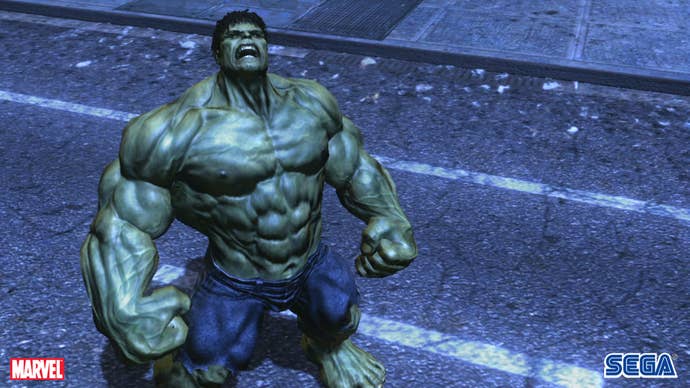
Movie-based games get a bad reputation, and for the most part they deserve them. This one probably deserves its middling reviews, but I've always had a soft spot for it. Based largely on Radical Entertainment's excellent The Incredible Hulk: Ultimate Destruction, Sega's movie-based Hulk game took the general basics (and to be honest, many of the specifics) of that game's open-world take on the Hulk and sharpened the focus on destruction.
Causing havoc is one of the greatest joys of the open-world genre, and the Hulk is about as good a causer of havoc as you could come up with. Developer Edge of Reality understood this, and they made it uproariously entertaining to explore the destructive potential of a surprisingly accurate New York City. From Radio City Music Hall to the Guggenheim Museum to the United Nations, Hulk's New York was loaded down with recognizable landmarks, all of which could be reduced to rubble. (There was even an achievement for it!)
Adding to the thrill, the process of buildings going from pristine to demolished was often gradual. Every skyscraper had a façade that could be hammered away in bits and pieces, so a skirmish in the streets will create collateral damage that could be simultaneously satisfying and surprising. I won't forget when I surveyed the damage after one fight and noticed that the bus I had hurled through the air earlier had embedded itself in the corner of a building about five stories off the ground. At first I thought something that awesome had to have been a bug, but about 20 minutes and 30 cars lodged into buildings later, I was convinced the game was functioning as intended.
And to top it all off, when the Hulk's antics had attracted too much military attention, the way to escape the heat was to duck into the New York City subway system and ride it to a different part of town. They never showed the actual trip, but I derived plenty of entertainment thinking about the Hulk trying to keep a low profile on a packed train, avoiding awkward eye contact with fellow passengers and wondering if that one puny human knows his music is cranked so loud his earphones are doing nothing to keep the rest of the car from hearing his awful taste in music.
Pinball Hall of Fame: The Williams Collection
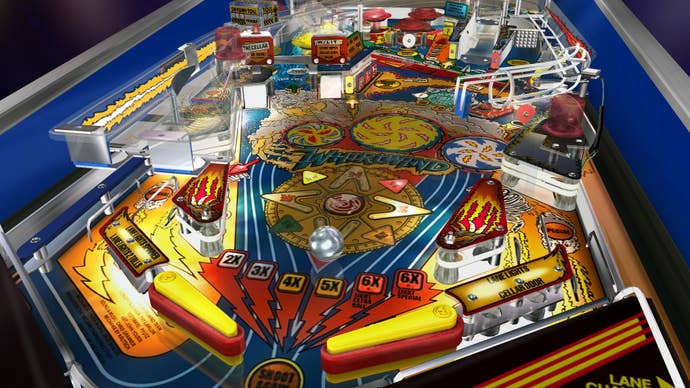
I've always loved digital adaptations of pinball. I lost silly amounts of time to Epic Pinball, Devil's Crush, or Pinball FX, learning each game's virtual tables and janky physics inside and out until I could earn extra balls faster than I lost them, achieving a sort of pinball immortality. The one problem was that their tables were all original constructions, so as good as they might have been, they were never quite like the real thing. Then Farsight started making pinball games based on real-world tables, and with shockingly true-to-life physics. The first, Gottlieb Pinball Hall of Fame, was a collection of vintage pinball machines spiked with a couple flashier, more modern tables. But The Williams Pinball Collection was a different beast, collecting some of the greatest machines ever made, from classics like Pinbot to Medieval Madness and Tales of the Arabian Nights.
The games were sold under the "Hall of Fame" banner, but it would have been more accurate to call them museums. These were relics, dinosaurs really, preserved in peak condition for people to appreciate and understand long after the actual tables go extinct. Unlike that one machine you remember in the back of the bowling alley that had an "out of order" sign on it half the time and one gimpy flipper the rest, these pinball tables will always be immaculately maintained. It may be my favorite game this generation, but I'm convinced its true value (and that of the Pinball Arcade series that spawned from it) will only be appreciated by future generations. Until then, Pinball Hall of Fame will stand simply as a loving retrospective on a sadly unheralded but distinctly American art form.
Mike Williams, Staff Writer
Crackdown
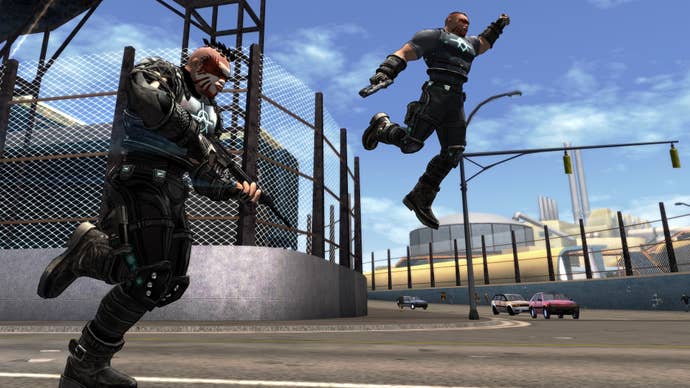
If there's one Xbox game you have to play before the Xbox 360 gets set out to pasture, that game is Crackdown. The twist to the rise of Crackdown is no one bought the game for Crackdown. Like Brave Fencer Musashi, which included a demo for Final Fantasy VIII, there was a highly anticipated game hiding behind Crackdown. For a limited time, Microsoft Games Studios offered up an access code for the Halo 3 Beta. So people bought Crackdown for Halo 3 and we were surprised to find out the game was damn good.
Realtime Worlds, who went on to develop the studio-killing APB, struck gold with the game. There was next to no story, just a vague notion of cleaning up the city as an augmented agent, backed by a faceless Director. Our super-powered cops probably ended up causing as much damage as they stopped, but the game was pure fun. Kill gang members, leap to the rooftops, collect orbs, power-up your abilities, and repeat. Jump higher, drive faster, and dispatch the city's gangs using whatever was at your disposal. The DLC even included the harpoon gun to attach thugs to passing vehicles and landmarks (that sounds more gruesome than it really is).
I enjoyed Grand Theft Auto III, Vice City, and San Andreas, Crackdown was the first time I had nothing but pure fun in an open-world game. The game opened my eyes and it remains my favorite 360 exclusive, even today. Crackdown 2 was rough around the edges, but Volition has provided the spiritual sequel the original game always deserved in the form of Saints Row IV.
Dead Space 2
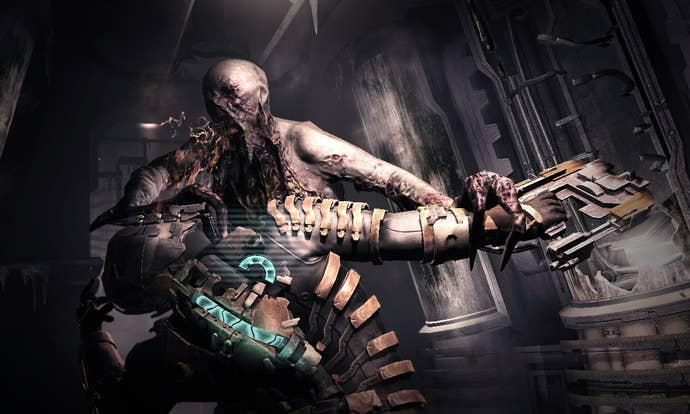
Dead Space 2 is Resident Evil 4 to Dead Space's Resident Evil. As the first sequel in the Dead Space series, the game had a foot in the horror and action sides of the fence, and delivers an experience full of tension, tight corridors, nauseating monsters, and soul haunting scenes.
An improvement over its predecessor in almost every way, Dead Space 2 is also better than its sequel - primarily because its story is scarier. It introduces the use of telekinetic powers, letting you slow down enemies or fire things across a room at all the creatures trying to kill you. When you do, go for the limbs, not the head. In a turn of what's ordinary in shooters, headshots do jack squat.
If you can make it through the terrifying first 30 minutes, you'll find there are also puzzles and zero-G environments to maneuver through, and plenty more "holy crap" moments to soak up and relive when you close your eyes to go to sleep. Note: the crazy demon child zombies suck.
Dance Central 2
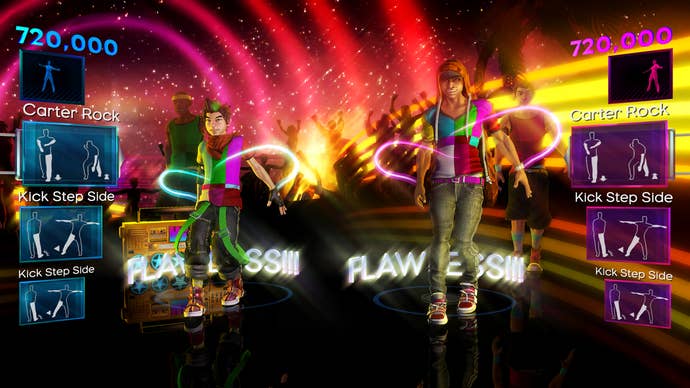
Shocked? So was I. I picked up Dance Central 2 for cheap when I purchased my used Kinect. I figured if I was going to get a motion control peripheral, I might as well get games that I couldn't play anywhere else. Popped DC2 into the 360 and was welcomed with a world of hurt.
I have rhythm, but Dance Central 2 showed me that I can't dance. Not even remotely. Despite that, I was having fun failing over and over again with my girlfriend. And as I put more time into the game, I found something out.
See, while Ubisoft's Just Dance is more fun than the Dance Central series, getting better at Dance Central will actually get you closer to being a better dancer. It's the difference between Guitar Hero and Rocksmith. The fun game will always be more popular because everyone can try it, but it's more challenging and rewarding to try the latter title.
Add to that fact that Dance Central is one of the few games in which the Kinect works perfectly. It's the ZombiU of the Kinect: the game where the promise of new controls shines upon your withered, cynical heart.
Fable II
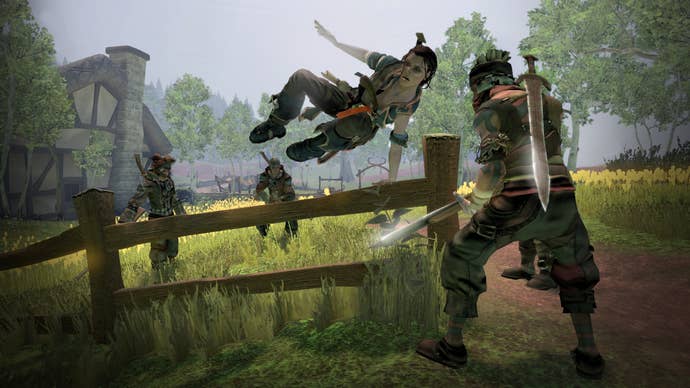
The best in the series. Fable kicked off everything and Fable III tried some interesting ideas, but Fable II will always be my go-to Fable title. I'm going to share a secret with you: I like the Elder Scrolls Jr. game that is Fable II more than I particularly enjoy the Elder Scrolls games. There's just a sense of whimsy found in Fable II that's not present in Bethesda's well-crafted RPGs.
In addition, Fable II splits the difference between a linear quest and the true open world found in the Elder Scrolls games. Fable II offers different routes throughout the world, each with hidden treasures and nooks to find, but it never really breaks out into a huge plain or mountain range. I appreciated the tighter focus as I tend to find myself wandering into the middle of nowhere and getting stomped into a bloody smear in the Elder Scrolls games.
Fable II also gave me options. Did I want to be a bounty hunter? A blacksmith? A landlord? Perhaps an assassin? They're all possible and the game generally didn't lock you to a single path unless you murdered the townsfolk without impunity on your way to infamy. Can't make an omelet without killing a few families.
And there's the dog! It's your friend and ally through most of the game. It does not judge you for your evil deeds, it's always there finding treasure, and it defends you in battle. Call of Duty: Ghosts is just treading well-worn ground with its dog. Copycats!
The only problem with Fable II is it's the only Fable game you can't get on Steam. and this is a 360 list, so that doesn't even count.
Batman: Arkham City
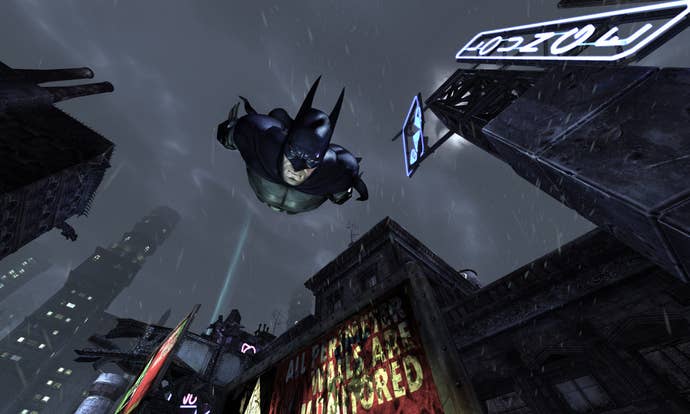
Arguably the best video game based on a comic book character, Batman: Arkham City delivers a dark and seedy world filled with unpleasant undesirables and classic villains.
Batman's abilities and modes of transportation through Arkham City are a central part of the game. Whether you're swinging through frozen buildings or roughing up local punks, there are always a variety of ways to work through your current task. That’s a large part of what makes this game so enjoyable. Do you go through the front door with fists flying, or perhaps sneak your way in undetected. Perhaps you want to throw off your enemy with smoke and mirrors, or use technology to gain the upper hand. Combine this freedom with superlative graphics and sound, and you have a game that’s gloomy, atmospheric, and absolutely brilliant.
If you do finish the game, there’s a ton of DLC to keep the beefy story going – plus you can always go back and tackle the side missions you might have missed. There’s even the change to play as Catwoman and Robin in their own campaigns! No wonder the game was almost universally critically acclaimed.
Jeremy Parish, Senior Editor
Crackdown (Again)
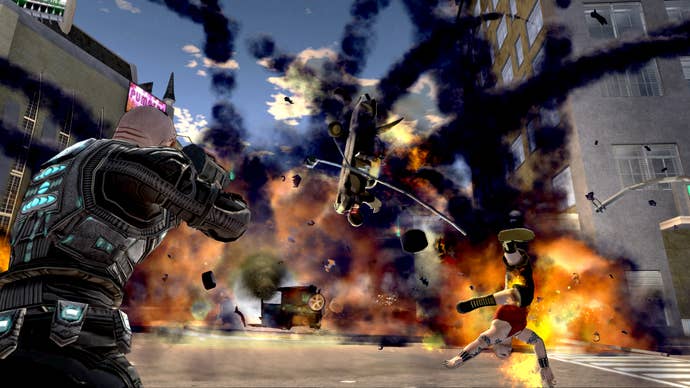
Saint Row what? Crackdown holds the distinction of being not only my favorite Xbox 360 game, but possibly my favorite last-gen game, period. While Grand Theft Auto was busy crawling up its own arse and undermining its fundamental appeal by trying to be Serious Art, Crackdown saw GTA's original visionary (David Jones) remind his former colleagues what it was all about: Big, dumb, freeform fun with a plot that existed only so far as to give everyone the excuse to cause mayhem.
Sure, Crackdown wasn't perfect; its missions could become repetitive, and the targeting system left something to be desired. But it more than made up for its failings with sheer panache. Despite not being based on any existing property, it was quite simply the ultimate comic book game. The experience and growth system combines neatly with the go-anywhere traversal mechanics to slowly unlock the game, naturally, as your Agent gains more powers -- the perfect expression of "Metroidvania" design in a sandbox world. When you finally earn the agility to scale that central tower and then leap to your death a kilometer below for the hell of it -- because after all your Agent is totally expendable -- it all feels worthwhile. And then you open up your game to a friend for go-anywhere co-op and the fun REALLY begins….
Mark of the Ninja
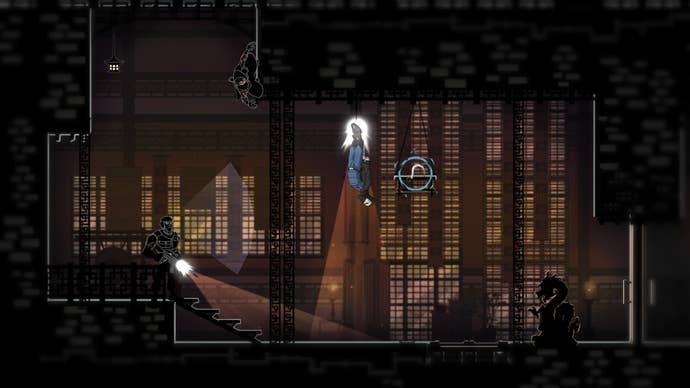
At the opposite extreme from Crackdown sits Mark of the Ninja, a game about stealth and subtlety. But it's breezy stealth, not the Metal Gear/Splinter Cell style where you sit for painstaking lengths of time to memorize enemy patterns, nor the Assassin's Creed style where you basically hold down a button and walk around casually. It's 2D stealth, and it works because developer Klei took such a brilliant approach to the idea. While your ninja is far and away more capable and silent than his enemies, he's also incredibly fragile; once you're spotted, it's practically game over (though not a forced one as in some games).
No, it's always in your best interest to sneak up and subdue enemies unseen, and while you have a commendable arsenal of tools and skills to make that happen, you have to work for it, too. A unique fog of war system obscures everything outside your character's line of sight, fading objects to a blur as you move away and your residual memory fades. Sound is represented visually to give a sense of location and range -- not only the noise your enemies create, but the sound your ninja causes as well -- allow you to plan your movements by tracking your enemies by "ear." It sounds weird, but it works perfectly. And the new DLC that unlocks a fully non-lethal mode of play means I have an excuse to go back and play through it again….
Halo 3 ODST

The black sheep of the Halo family is quite easily my favorite. Halo, like a lot of other shooters, tends to stick to a formula; ODST shakes things up, maintaining the series' fundamental mechanics but demanding a different approach. Rather than unfolding as a simple linear shooter as usual, it falls back to the original game's more open environments and expands on the concept, using a night-soaked occupied city as a hub to uncover hints for the whereabouts of the protagonist's lost orbital drop ship trooper team.
These hints unfold in the form of playable flashbacks, and those missions do reflect the standard Halo action style. But even they have a difference, as you take control not of the usual superhuman Master Chief but rather as elite soldiers -- and the disparity in power becomes clear as combat scenarios that had long since become old hat for the Chief suddenly elevate in difficulty. Surviving conflicts with high-level Covenant warriors becomes less a matter of nimble footwork and more a desperate, panicked struggle to stay alive. Both the reduction in firepower and the change in structure make ODST unlike any other Halo game, and an interesting exploration of what the series could be like if the audience were more willing to let its creators experiment a little. Oh well.
Cassandra Khaw, Content Editor
The Dishwasher: Vampire Smile
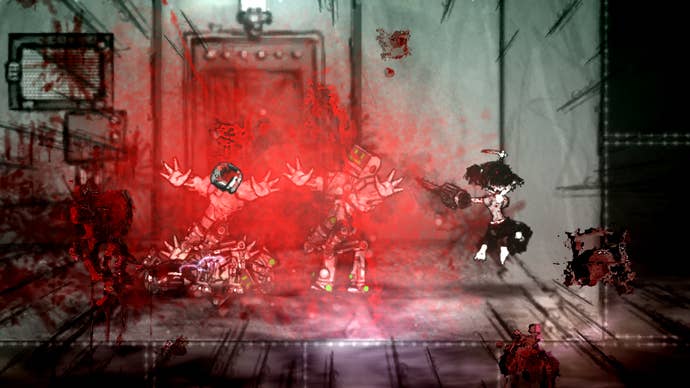
I'm so late to the Xbox360 party that it really isn't funny anymore. The first time I was actually able to sit down in front of the console was a little over two years ago. It was mid-summer in Sweden and the moment I could, I crammed the poor box full of indie stuff. (Thank you, Xbox Live Arcade.)
The Dishwasher: Vampire Smile has the distinction of both being one of the first few games I played on the platform and one of my favorites. Largely monochromatic outside of the occasional laser and the copious amounts of blood, Vampire Smile is, in a word, brutal. It's also slick as all hell. People talk a lot about how visceral combat feels but Vampire Smile makes it a point to make that statement mean something. The controls are tight, the characters highly responsive, the range of weaponry and moves almost criminally satisfying; oh, and have I mentioned it has a co-op mode? The savagery of the whole package is heightened further by the graphics: rough, ragged lines and twisted imagery galore. Like a page out of Johnny the Homicidal Maniac, Vampire Smile is unapologetic about the buckets of red it paints the room with. If anything, it seems to celebrates its own viciousness and that's perfectly fine by me.
Besides, you can't go wrong with a kick-ass female protagonist.
Pete Davison, News Editor
Blur
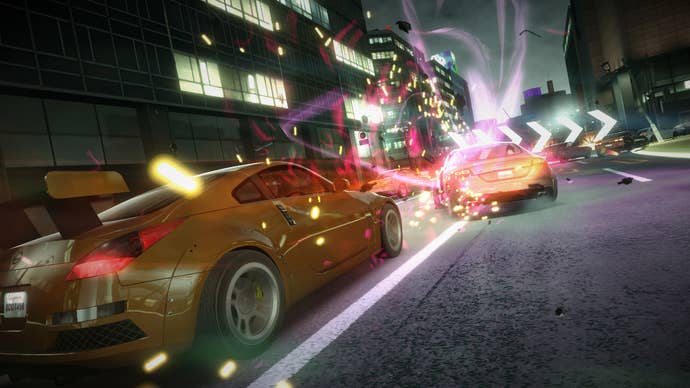
Bizarre Creations' swansong may have been released on multiple platforms, but I'll always associate it with the 360, as that's where I spent the majority of my time with it.
Blur was a wonderfully creative thing: the realistic cars and real-world settings of the Project Gotham Racing series blended effortlessly with the neon aesthetic of Geometry Wars and the powerup-heavy racing of Mario Kart. It was a racing game quite unlike anything else I'd ever played, and it was utterly compelling in both single- and multiplayer modes. It's just a shame no-one bought the damn thing.
Multiplayer was the real star, since it completely lifted Call of Duty's entire multiplayer metagame and successfully transplanted it to a totally different genre. As you raced, you'd gain experience for pulling off various cool maneuvers and performing well, with each gained level providing you with new vehicles, perks and other benefits. The more you played, the more you could customize your experience and set your car up according to your own personal play style, whether that was aggressive, defensive or technical.
Blur's multiplayer community is all but dead today, sadly, but the single-player component remains challenging and worthwhile, and the split-screen multiplayer is, for my money, at least as fun as the last few Mario Kart games. It's a shame Bizarre Creations never got the chance to refine the series with a sequel, because it had a huge amount of potential.
Deathsmiles
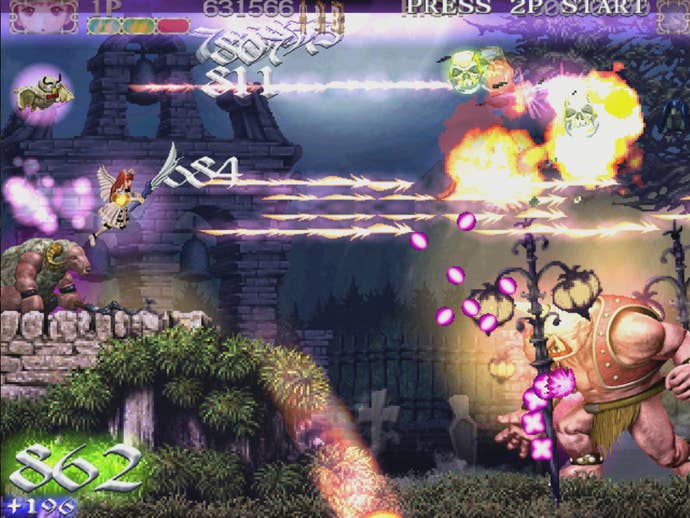
I'll never quite understand why the bullet hell developer community gravitated towards the Xbox 360 as its platform of choice when the rest of Japan shunned it. But I'm glad it did, because it means there's a whole host of excellent 2D shooters available for Microsoft's console -- and frankly it was a little difficult to choose between them.
Upon reflection, though, I have to go with Cave's Deathsmiles. It strikes a brilliant balance between accessibility and the seemingly insurmountable challenges of the bullet hell genre, it's bursting with personality and it has one of the best soundtracks I've ever heard.
Like most of Cave's other bullet hell shooters, the challenge in Deathsmiles comes not only from successfully making it through the levels unscathed, but in understanding the game's complicated scoring system. As you defeat enemies, they drop items, with different types of item being worth different amounts of points and adding to a counter in the corner of the screen. When this reaches a particular milestone, you can trigger a bonus mode, in which everything explodes into showers of high-value items, causing your score to skyrocket. To add further complications, each type of enemy is best defeated with one of three different types of attack, meaning you'll have to learn not only attack patterns, but which weapons you should be using in each situation, too.
Deathsmiles is, in short, a fine example of how the shmup genre demands as much skill as other highly technical types of game -- like, say, fighting games -- and yet at the same time remains both playable and enjoyable to newcomers.
Geometry Wars 2
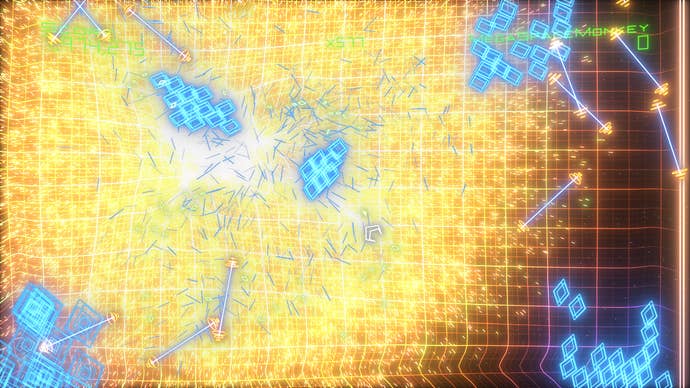
Some prefer the original -- it's the reason I bought a 360 in the first place, in fact -- but the refined, expanded experience that was Geometry Wars 2 was all I played for a significant period of time immediately after its release. I attribute this not to all the extra game modes, the sharper, more colorful graphics or the wonderful dynamic music, but instead to a tiny interface change Bizarre Creations made between the two games: replacing the first game's local high score readout with an Xbox Live-powered high score display that showed your nearest rival at all times.
This early implementation of asynchronous multiplayer helped elevate Geometry Wars 2 from being a competent sequel to its predecessor into pure "digital crack" territory. It helped that I had a healthy number of friends playing it at the same time as me, of course, which meant there was pretty much always a new high score to beat regardless of when I played. Some even took to deliberately blocking the top-right corner of their screen with opaque tape when playing, as the temptation to glance at your rival's score was usually enough to ruin an otherwise solid run.
Even though people have largely stopped playing the game competitively these days, Geometry Wars 2 still remains a fun single player experience. Its various game modes all play remarkably differently from one another, and everyone will likely have their favorites -- for me, I particularly enjoyed the Pacifism mode, in which you couldn't shoot and had to destroy enemies by passing through exploding gates, and Sequence mode, which tasked you with working through a linear sequence of levels that followed exactly the same patterns every time you played.
Geometry Wars 2 is significant for a number of reasons: firstly, it's simply a great game -- so far as I'm concerned, it's one of the best on the console -- but perhaps more notably, it was one of a number of games that started pushing us towards an at least semi-digital future, and highlighted the fact that new games didn't have to cost $60 and have multi-million dollar budgets. I just hope that, as a digital-only title, its legacy isn't lost in the transition to next-gen.








